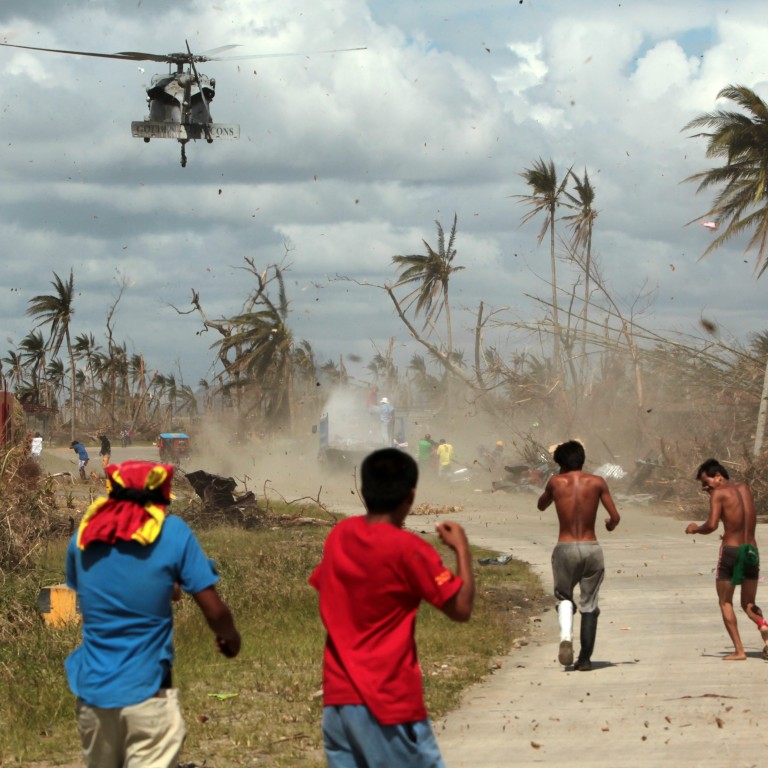
Philippine storm victims plead for help as they wait for aid
Ten days after one of the most powerful typhoons ever recorded, some residents of remote villages in Eastern Samar province, where the storm made landfall in the central Philippines, said they were still waiting for aid.
The Philippines is facing an enormous rebuilding task from Typhoon Haiyan, which killed at least 3,974 people and left 1,186 missing, with many isolated communities yet to receive significant aid despite a massive international relief effort.
In ravaged villages along the coast of Eastern Samar, heart-breaking, hand-written banners plead for attention.
“Help us,” said one in large, silver-painted capital letters on blue plastic sheeting. “We need food.”
The storm surge that turned fields into sea in just seconds swept away dozens of flimsy timber homes in Hernani, a small community of about 200 farmers and fishermen, killing many.
One family said there had been one delivery of food and water. Others said there had been none.
It’s too hard. We don’t have shelter, clothes or food. It’s just too much
Ten members of the Candido family lost their home and now shelter from the sun and regular torrential rain under a plastic sheet.
“We don’t have any choice over our future,” Nestor Candido, 39, said on Monday. “All we do here is plant vegetables and harvest coconuts and now this tragedy ... It will take time to get another harvest.”
Just a few hundred metres away, all that remains of Eida Oracey’s home of 10 years is the kitchen sink and the toilet.
“It’s too hard. We don’t have shelter, clothes or food. It’s just too much,” she said.
While aid packages have begun to reach more remote areas, much of it carried by Philippines air force helicopters dating back to the Vietnam war, the United Nations said people were still going hungry in some mountainous provinces.
“Many more people”
Information about several provinces in the west of the Visayas region remained “limited”, with 60 per cent of people in towns in the northeast part of Capiz province needing food support, the United Nations said.
“Basically, we’ve provided everyone with relief,” said Eduardo del Rosario, director of the National Disaster Risk Reduction and Management Council, in Manila on Tuesday. “What we are doing right now is sustainment.”
The World Food Programme said it had reached 1.9 million people in need of food. “The reality is we know that there are many more people who have been impacted by the storm,” said executive director Ertharin Cousin.
“We knew that there were at least 2.5 million (in need of food) when we performed our initial assessment.”
Médecins Sans Frontières painted a bleak picture across the Visayas, especially on Leyte, southwest of Samar. In the hardest-hit city, Tacloban, it was clearing a carpark to set up a tent hospital which should be up and running within days.
Bodies were still being found under rubble, and, according to one resident, 15 were from the same family, a witness said.
In Burauen, a city of 55,000 south of Tacloban, “the situation is disastrous”, said emergency co-ordinator Federica Nogarotto.
“Nearly 100 per cent of houses are damaged or destroyed.”
Countries and organisations have sent or pledged a total of US$248 million (HK$1.92 billion) to help 10 million people affected by Haiyan, the Foreign Ministry said.
Asif Ahmad, the British ambassador, said relief operations could last months, if not longer, because livelihoods, not just homes, had to be rebuilt.
“How long would it take to grow a coconut tree?” he said.
